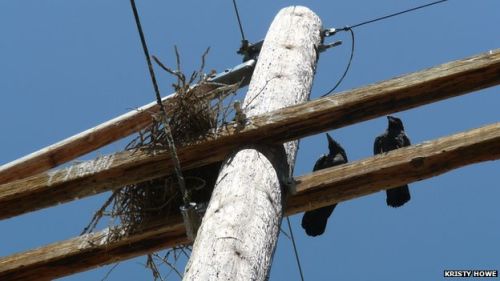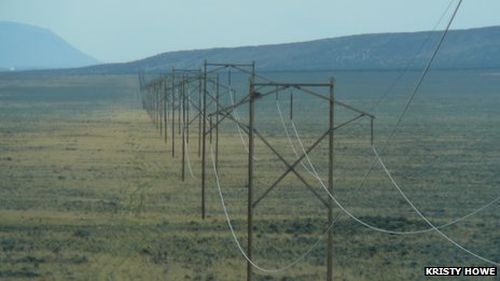Raven are known for its intelligence. Recently researches has found that the majority of ravens are preferring the tall poles of power line in western United States as their nesting site. And in last 40 years there is an increase of 300 percent in raven population, as nesting on such heights give them an edge while locating prey. Though living on these high power lines are very dangerous, but raven over the years has evolved to use human engineering for its benefit. As told to BBC News by the co author Kristy Howe from Idaho State University:
Power lines are dangerous and electrocute many species of birds, the ravens are running that same risk as well. Maybe they are smart enough to know not to touch a particular line? The benefits to them outweigh the risks.
There are other birds like ospreys, hawks and eagles using high voltage transmission poles for nest building, however their numbers are still low. Researchers noted that 58 percent of the raven nests are located on power poles, 14 percent on other man made structures and rest 19 percent preferred trees. They are seen to come back on these poles for nesting year after year. Young ravens born on these power poles consider them as their natural site for nesting and influencing other ravens to see power line as potential nesting site.
Building a nest several feet high gives raven an edge of full field vision, increased strike rate and effortless take off. The increasing number of nests on these poles are posing threat for many endangered species like sage grouse, desert tortoise, least tern and San Clemente loggerhead shrike. Earlier coyotes or badgers were considered as the major threat for the species of sage grouse, but ravens are equally a threat for the species. The ravens are capable enough to push the hen out of her nest and prey on her eggs.
The researchers says ravens would be seen colonizing newer areas in which power transmissions has never run through till now and will pose serious threat for the sage grouse population. Well with more human engineering structures standing high in sagebrush area, increasing number of ravens are colonizing newer area. Well what choices they have, with too sparse green patches left to dwell. To continue to live they need to adapt in every situations.





